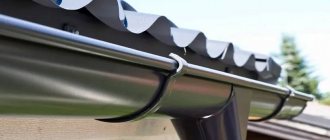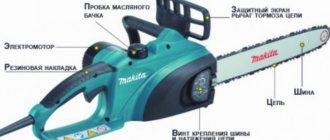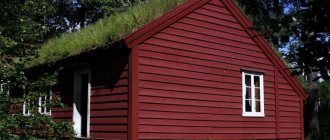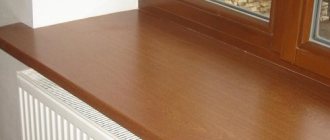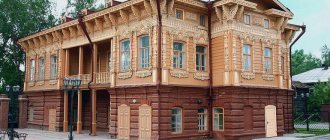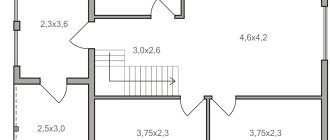The decorative characteristics of the plant and the characteristics of its cultivation depend on the structure of the root. Based on this characteristic, herbaceous crops are divided into four groups.
Herb groups
- Taproot. They produce additional shoots from the main root. Unpretentious, take root well in any conditions. These are sainfoin, horned lambsfoot, and others.
- Rhizomatous. “Crawl” horizontally, quickly covering large areas. Nodes appear on the powerful rhizome, which after some time give rise to above-ground shoots. These are bluegrass, meadow foxtail, and white bentgrass.
- Flat bushes. They grow in small bushes. Over time, grass “bumps” form where new and old shoots grow together. This is red fescue, white fescue.
- Loose bushes. They form one root node, from which above-ground shoots arise. They grow slowly. This is timothy grass, perennial ryegrass.
Crops can be one-year or perennial. The former are most often planted on temporary lawns or used in various mixtures. Perennials are mixed or sown as monocultures. They do not need to be reseeded annually, which is very troublesome and time-consuming. In some cases, only reseeding of individual areas is required.
- Landscape
How to care for a lawn: necessary procedures and seasonal work
What happens
In trade, seed material for growing lawns is presented in the form of a mixture of grasses. It is selected taking into account the purpose of using the lawn. The mixture contains herbs with the characteristics necessary for further use. In some cases, monograsses are used to grow lawns.
In total, there are 7 types of herbs used for these purposes:
- Tall lawn grasses (narrow ironweed, creeping wheatgrass, awnless bromegrass, vicoleaf sainfoin). The height of these herbs can reach more than 1 m. This group of plants is distinguished by its tallness, light-loving nature and thick stems. The advantages of grasses of this type include rapid growth, but the disadvantage is the need for frequent mowing. The grass has to be mowed several times a month.
- Semi-upland lawn grasses (yellow alfalfa, meadow timothy, perennial ryegrass). The group includes medium-sized lawn grasses. Their stems are 50-100 cm high. After cutting, the grasses very quickly come to life and grow, creating a dense lawn carpet. This type of plant is used for seeding large lawns. Herbs combine harmoniously with garden flowers.
- Medium-sized lawn grasses (red fescue, meadow bluegrass, bentgrass). The height of the plants included in the group can reach 50-70 cm. They are distinguished by thin stems and strong bushiness. The advantage of herbs of this type is their ease of care.
- Low-growing lawn grasses (white clover, periwinkle, thyme). Plants belonging to this group are used to create dense, low-growing grass carpets. They are characterized by slow growth. Despite this, lawns made from these grasses require frequent mowing. They also need regular watering. Herbs from this group are used to create lawns only in a mixture. To create a dense canvas, grass is cut to a height of 4-5 cm. The main disadvantage of plants is the high cost of seed.
- Rhizomatous lawn grasses (white bentgrass, bluegrass, meadow foxtail). A feature of plants of this type is the rapid growth of roots, which contributes to the formation of many new shoots. The grass carpets made from them are distinguished by their density, which is preserved for many years.
- Loose-bush lawn grasses (meadow fescue, wild grass, rhizomatous wheatgrass). This group of plants includes grasses with a shallow root system. They differ in that they have only one tillering node. Due to the spreading nature of the grass bushes, their lawns have good density.
- Tap-root lawn grasses (horned grass, blue alfalfa, red clover). The plants have lush bushes, are easy to care for, and look beautiful in a single carpet of lawns.
Tall lawn grasses
This category includes plants exceeding 1 m in height. They are distinguished by thick stems and light-loving properties. This lawn grass is attractive due to its rapid growth rate. If you need to green up your area in a short time, this is a suitable choice. But at the same time, you should be prepared for frequent plant care. Tall varieties are mowed several times a month. Let's look at the most popular representatives of the species.
Narrow-haired wheatgrass
The height of the stems is about 1 m. It is distinguished by a powerful root system reaching 3 m in depth. It shows all its qualities at 3-4 years. Wheatgrass grows as a bush and is not used on high quality lawns. Its main advantages:
- drought resistance;
- resistance to sudden temperature changes and frost;
- tolerance to winters with little snow.
Although the plant is unpretentious, it grows better on fertile soils with regular watering.
Creeping wheatgrass
A perennial plant from the Bluegrass family. The stems reach a height of 0.6-1 m. The roots are superficial, sometimes growing 15 m in length. Wheatgrass reproduces by seeds and rhizomes. The grass is unpretentious and survives even in unfavorable conditions. Main features:
- leaves are narrow-linear, arranged on the stem in an alternate order;
- the color of the leaf blade is bluish-green;
- The spikelet flowers are yellow-green and appear between May and July.
Planting a lawn once is enough; then the wheatgrass reproduces on its own.
Pay attention to the types of garden hydrangeas with photos and names.
Bonfire without bones
A perennial plant reaching a height of 1.2 m. The grass is characterized by a huge rhizome going 2 m deep. It is used for meadow-type lawns. For better survival, it is recommended to sow awnless brome in early May. Main advantages:
- undemanding to soil, develops well even in poor areas;
- tolerates trampling well and recovers quickly;
- high frost resistance.
The flowering period of the cereal is early July. The grass is not resistant to repeated mowing.
On topic: review of gasoline grass trimmers - https://top-luchshih.com/garden/equipment/grass-trimmer/
Vicoleaf sainfoin
Perennial plants with a developed root system. One bush produces many shoots, the height of which reaches 0.9 m. The leaves are 6-14 pairs, elliptical in shape. Sainfoin blooms in short ovoid clusters of bright pink color in May-June. Main features of the plant:
- drought resistance;
- frost tolerance;
- unpretentiousness to soils;
- love of light.
Sainfoin goes well in combination with other meadow herbs.
Advantages over wild
Plants intended for creating lawns are characterized by rapid growth of shoots. This allows you to green up your lawn in a few weeks. The seedlings of such grasses form a dense turf layer with an attractive aesthetic layer. Contact with lawn grass causes a pleasant tactile sensation. They have a velvety surface and a rich, rich color.
Lawn grasses have the following advantages:
- take root quickly;
- have a high degree of resistance to various types of plant diseases;
- suppress weed growth;
- have lush bushes with rich colors.
Classification of grass mixtures
Herbal mixtures for lawns are divided into several varieties:
- fast. Representatives of this group are wheatgrass, wheatgrass, grassland and multifloral ryegrass, and common comb grass. Plants develop quickly and with sufficient soil moisture, a green lawn is formed within a year after sowing. But fast-growing grasses are at the same time short-lived, while slow-growing grasses (meadow grass, red fescue, common bentgrass), on the contrary, are characterized by longevity ;
- shadow. They are adapted to a lack of light, therefore they feel good in shaded areas. Example - pasture ryegrass, red fescue. Also, these plants are characterized by resistance to mechanical influence (you can walk on the lawn);
- solar. These herbs can be exposed to the direct rays of the sun all day without harm to themselves. They also have high drought resistance. Representatives of this group are meadow bluegrass, alfalfa, sheep fescue, etc.;
- universal. Some herbs, for example, bentgrass, tolerate a wide range of negative factors - heat, frost, drought. That is why they are called universal: such a lawn can be grown in almost any region. These plants also have negative sides. In the same bent grass, for example, growth slows down after cutting.
Types of herbal mixtures
There are several classifications of grass mixtures. Most often they are divided into:
- fast-growing (have strong tillering of grass mixtures, ensures good density of the lawn and rapid recovery of bald spots);
- solar (grass mixtures have a high degree of resistance to drying and fading under the influence of bright sun and high temperatures);
- shady (intended for planting in shaded areas);
- universal (grass mixtures that are undemanding to location and growing conditions).
Unlike wild grasses and some monocultures, grass mixtures are collected from plant seeds characterized by good germination. Herbs in mixtures are selected taking into account their advantages and disadvantages. The recipe for each lawn mixture is carefully worked out. They are also distinguished by purpose and growing conditions.
How to sow?
A low-growing lawn is sown in the same way as an ordinary lawn. In order for the green carpet to please the eye for a long time, it is necessary to carry out the following preparatory work several months before sowing (for example, in the fall):
- Clear the area of debris. At this stage, it is necessary to remove stones, stumps, and also decide the fate of existing plantings.
- If necessary, cut off the turf. Dig up the site. Remove weeds, for example using herbicides.
- Level the surface and organize drainage.
- Make sure that the layer of fertile soil is at least 15 cm and compact it.
Sowing seeds can be done manually or using a seeder. To achieve uniform seedlings, you need to sow half of the seeds, passing along the site, and half - across.
It is advisable to leave some seeds in reserve. They can be used later if bald spots appear.
The best varieties for the Russian climate
You can create the perfect lawn on your site only by choosing the right seed. The rating of lawn grasses, which is compiled based on expert opinion, can help in choosing it.
Meadow bluegrass
A lawn variety of perennial plant that, with proper care, can create a dense grass cover. Not a single weed grows through it. Meadow grass is the most popular lawn grass.
It can be used for sowing, as a monoculture and as part of grass mixtures. The plant never bushes. Lawns grown from it have a flat surface without plant hummocks.
Advantages:
- rapid growth and greening;
- high degree of resistance to freezing and drought;
- perenniality;
- germination up to 90%.
The disadvantage of the plant is that it requires regular weeding during the first year of growing a lawn. The turf reaches the density necessary to suppress weeds only in the second year.
Irina (agronomist). Advice:
Small meadow bluegrass seeds should be sown in the soil to a depth of no more than 1 cm. The biological feature of the variety is its ability to produce 110-120 shoots per square meter. decimeter, regardless of the planting density of the seed. This means that seed can be sown in soil with low density.
Perennial ryegrass
This variety is often used for sowing on pastures. This gave the plant a second name - perennial ryegrass. The variety is included in many lawn grass mixtures. Its content in them can be up to 25%.
Advantages:
- rapid restoration of vegetation after mowing;
- color stability from early spring to late autumn;
- not afraid of trampling;
- activity and friendliness of seedlings;
- durability (plant lifespan up to 7 years).
Flaws:
- prone to freezing;
- can only be grown in warm regions.
Marina (landscape designer). Advice:
The area for sowing perennial ryegrass should not be flooded in the spring. This will lead to the death of the plantings. Grass can be sown in the ground only when the risk of return frosts has passed.
Red fescue
The variety is ideal for lazy lawn owners. It is easy to care for, has a beautiful silky turf structure, and causes pleasant tactile sensations when in contact with the human body.
The ideal grass mixture for lawns is a mixture of red fescue and bluegrass. A lawn sown with it retains its green cover for a long time, regardless of weather conditions.
Advantages:
- versatility;
- resistance to drought and trampling;
- dense turf cover.
The main disadvantage of fescue can be considered its ability to grow strongly and colonize areas adjacent to the lawn.
Irina (agronomist). Advice:
The best times to sow fescue are spring and autumn. The air temperature during grass planting should not fall below +12°C.
Clover
One of the best types of grass for sowing large areas. The second name of the variety is trefoil. Its bushes have a beautiful emerald color. There are more than 300 types of clover in nature, but only 7 of them are used in landscape design. These include meadow clover, as well as white and red.
Advantages:
- low maintenance;
- high degree of resistance to trampling and various types of plant diseases;
- rapid restoration of the cover after mowing.
Flaws:
- after mowing for several days, clover loses its decorative appeal;
- the smell of the plant attracts insects;
- After rain, the surface of the clover lawn becomes very slippery and does not dry out for a long time.
Clover begins to suppress weeds only from the second year of its life.
Andrey (landscape designer). Advice:
When creating a lawn, it is important to monitor its boundaries. Clover very quickly disperses throughout the area, colonizing neighboring areas.
Polevitsa
The grass is a dark, rich color that can withstand frequent mowing. Most often, bentgrass lawns are arranged around fruit trees in order to avoid contact of falling fruits with the ground.
Advantages:
- undemanding to the composition of the soil;
- versatility;
- quick recovery after mowing;
- ease of care;
- increased turf density;
- high degree of resistance to trampling.
Flaws:
- requires abundant watering during periods of drought;
- in the first year of growth it is not resistant to trampling;
- does not tolerate severe frosts.
Andrey (landscape designer). Advice:
Bentgrass is best suited for seeding sunny areas. Planting seeds in the ground can be carried out from spring to autumn.
Bentgrass runner, dog and slender
The main advantage of bentgrass is that it does not grow higher than 15 cm, so even if you arrive at the dacha after a long absence, you will not be greeted by the wilds of the Amazon canyon. But with proper care, the bentgrass spreads quite willingly, occupying the entire allocated territory.
Despite the fact that bentgrass can live on any soil, it loves well-fertilized and drained soil most of all. It only needs abundant application of mineral fertilizers before sowing, and then you can get by with standard rates.
- Lawn fertilizers: how to feed your lawn in spring, summer and fall
A lawn is not just a free clearing with grass, but a complex mini-ecosystem that needs fertilization.
Bentgrass seeds are extremely small, so before sowing they are mixed with sawdust in a ratio of 1:10, and sown at the rate of 15 g per 1 sq.m. It is advisable to sow in the spring or early autumn, but the summer heat will be detrimental to the seedlings. The bentgrass is cut once every 3-4 weeks, and this is done rather to rejuvenate the cover. Before the onset of frost, the bentgrass is mowed very low, right under the ground, so as not to remove the yellow grass in the spring. At the beginning of the season, the lawn is aerated using special rakes or ordinary thin garden forks.
- Choosing the right rake for the lawn, garden and vegetable garden
Are you looking for a rake to use in your dacha? Find the best option by studying our instructions.
The bentgrass also has a couple more distinctive features. Firstly, it reproduces well vegetatively, so you can expand the plantings or plant individual bushes in the flower garden without buying seeds and waiting a long time. And secondly, if you plant a bentgrass next to a pond, it will branch out and form floating vines descending to the water, which look very unusual and decorative in the design of garden ponds.
Lifehacks for sowing
To obtain the same density of turf over the entire area, the seed must be sown crosswise, passing in two directions. In the first pass, half of the seed is sown. You need to scatter it into the ground without any bald spots. The remaining part of the seeds is sown into the soil in the second pass, which is carried out according to the algorithm of the first.
Good adhesion of seeds to the soil can be ensured by spraying it with water from a fine spray nozzle. It is strictly forbidden to water the lawn after sowing with water from a hose without a sprayer.
What kind of lawn would you like to grow on your property?
MonoherbsHerb mixture
Before sowing grass, it is necessary to check the expiration date of the seed. You should not use seeds with a shelf life of more than 2 years for planting a lawn.
You can ensure a higher percentage of grass germination by using covering material or mulching the soil. In the first case, crops are covered with agrofibre if the air temperature during planting is below 15 degrees or there are many birds in the planting area. Mulching the soil is done when planting lawn grass in sandy or peat soil.
Seed consumption
Seeds of different types of lawn grasses differ in size and density, so seeding rates for specific crops vary. If we take the average parameters (seed size and its density), 30-40 g of seeds per 1 m2 are sown in light, loose soils, and 40-50 g/m2 in heavy soils. If the lawn has a large area, the mass of seed is calculated per 1 hundred square meters and is 3-4 kg on light soils and 4-5 kg on heavy soils.
A significant deviation from the norm in one direction or another is not desirable, as this affects the quality of the lawn. If you take more seeds, their germination is extended over time and occurs more slowly. The sprouts “compete” with each other: those that emerged earlier suppress the growth of late shoots. If less than the norm is sown, seedlings are sparse, uneven, and bald spots remain on the lawn.
Content
- 1. Landscape lawn: composition of grasses 1.1. Bluegrass (Poa nemoralis)
- 1.2. Meadow bluegrass (Poa pratensis)
- 1.3. Annual bluegrass (Poa annua)
- 1.4. Common bluegrass (Poa triviales)
- 1.5. Perennial ryegrass (Lolium perenne)
- 1.6. Meadow fescue (Festuca pratensis)
- 1.7. Timothy grass (Phleum pratense)
- 1.8. Common comb (Cynosurus cristatus)
- 2.1. Sheep fescue (Festuca ovina)
- 3.1. Soddy pike (Deschampsia cespitosa)
Among the many genera of cereals, the most suitable grasses for lawns in the middle zone are various types and varieties of fescue, ryegrass, bentgrass and bluegrass.
In addition to good germination, they have a relatively uniform color, they are frost-resistant and are not too demanding on the nutritional value of the soil. It is not surprising that all of these grains are present in varying degrees in any grass mixture for lawns. Depending on the purpose of the lawn, the specifics of the area and personal preferences, various compositions of grasses are selected, which are usually called grass mixtures for the lawn . Whether it is a site that does not require mowing, or turf that is resistant to trampling, the composition of the grass mixture for lawns will vary in each case.


